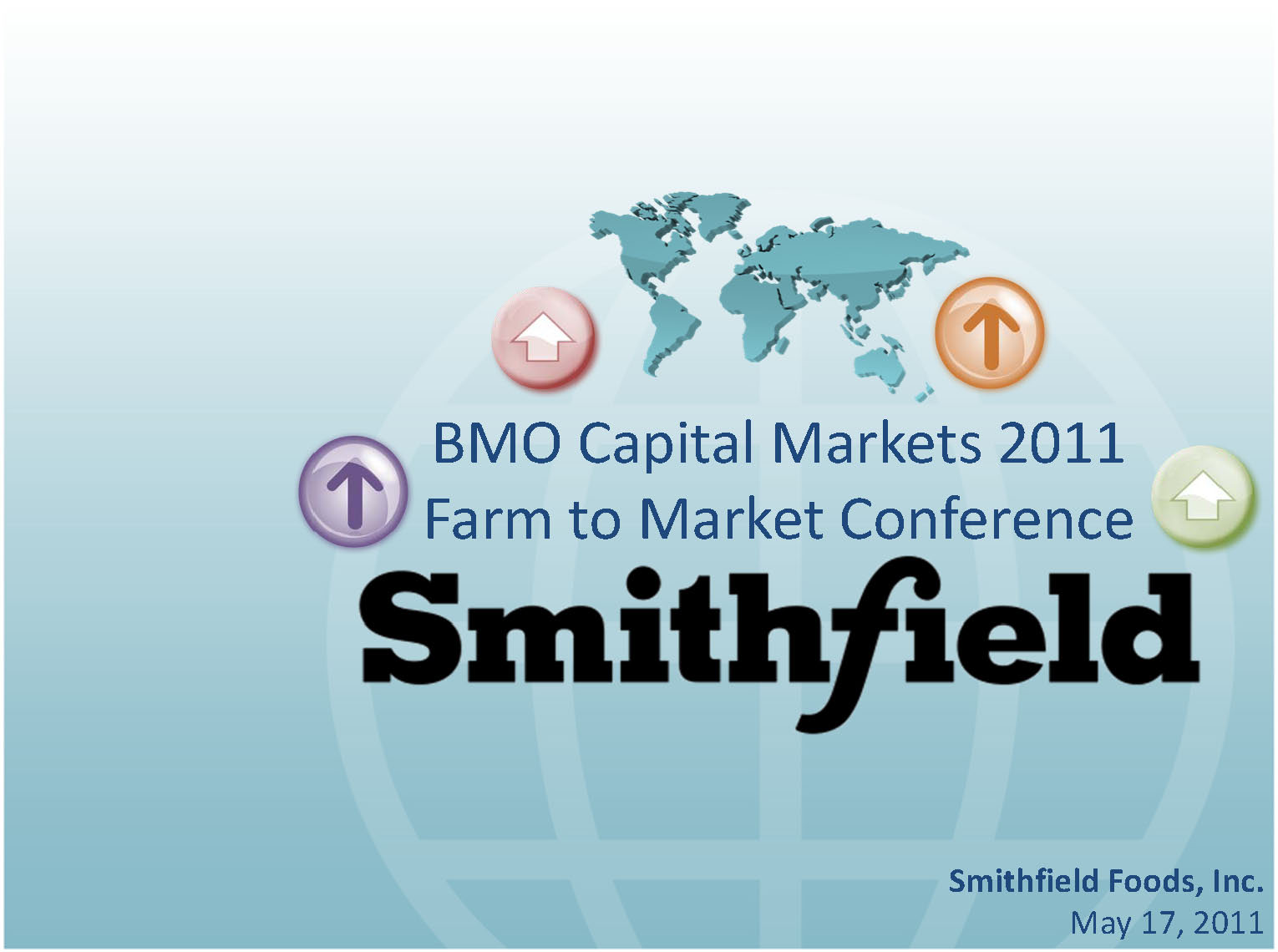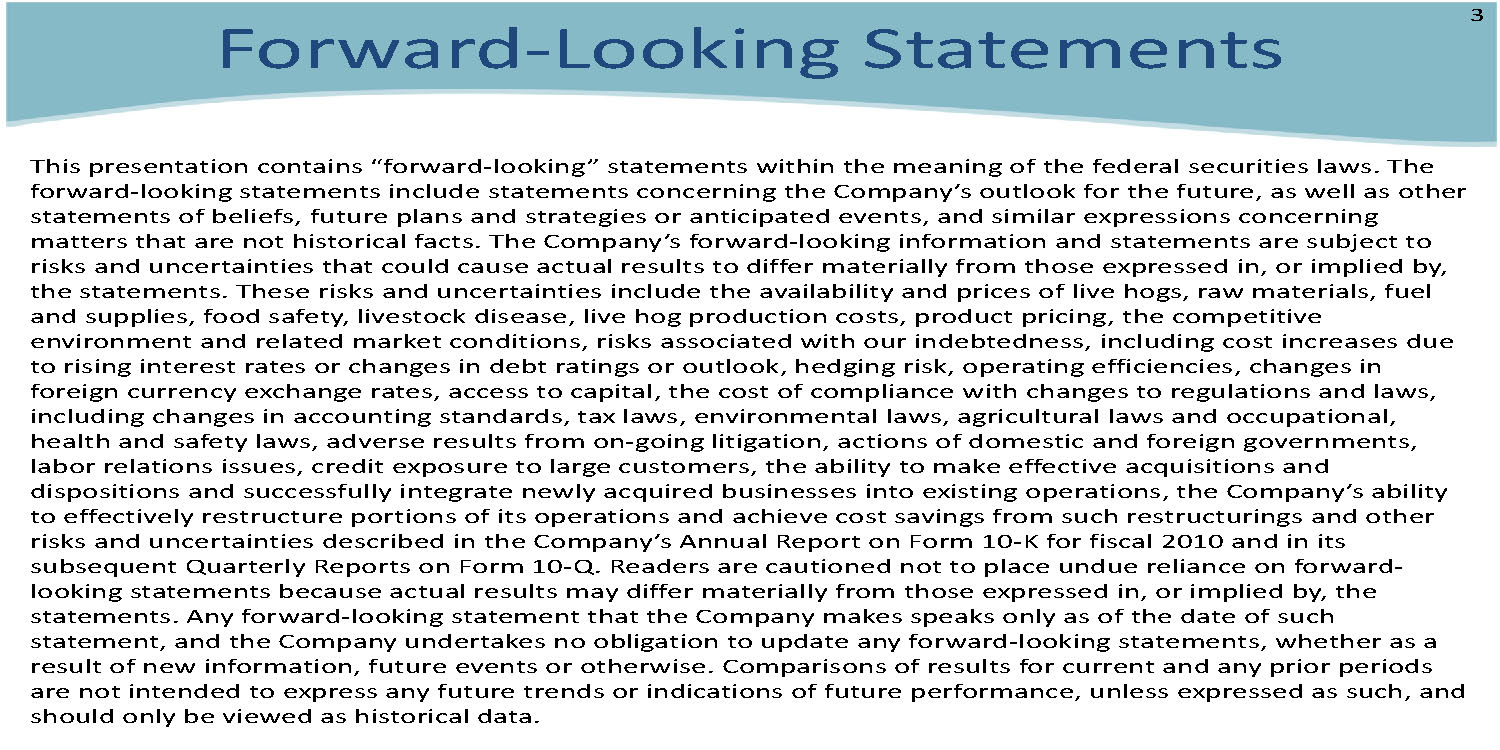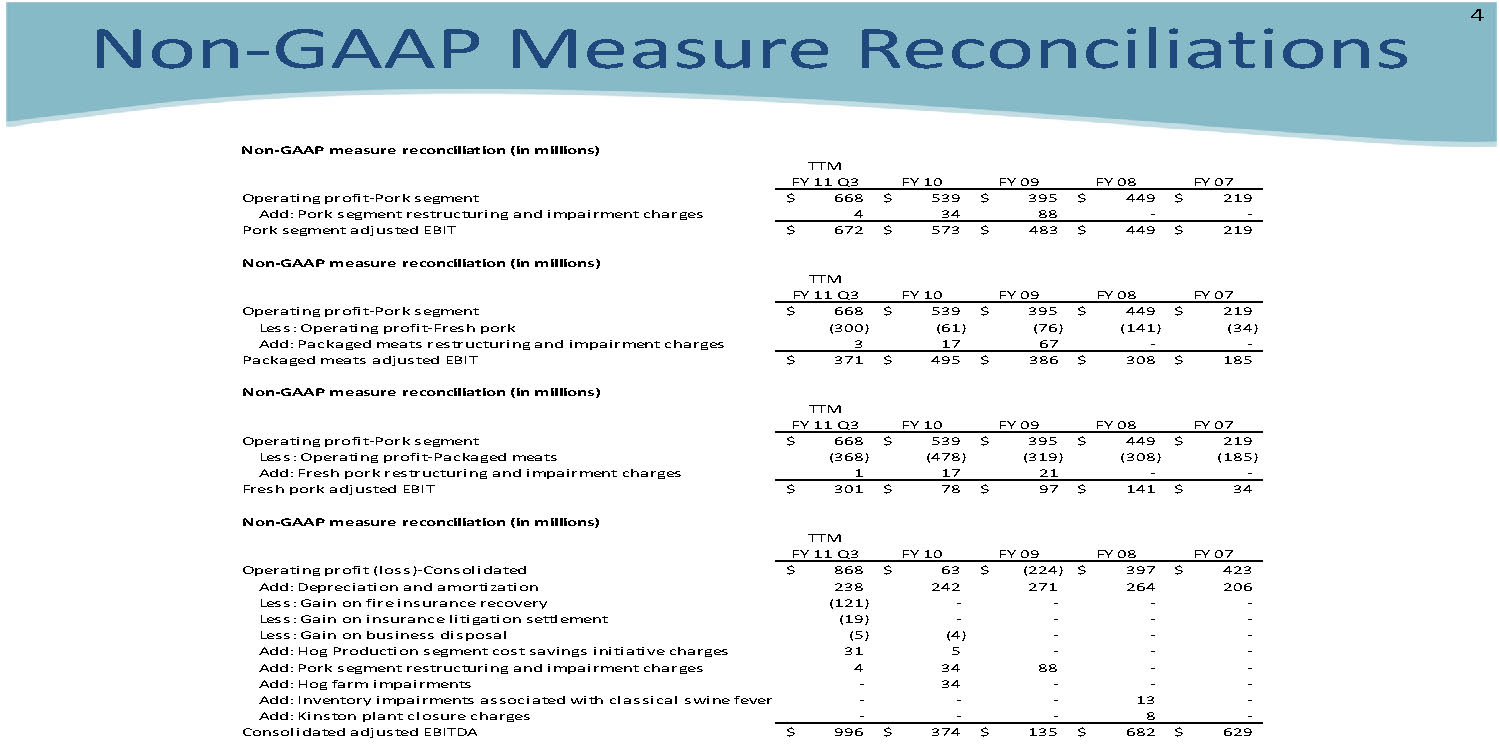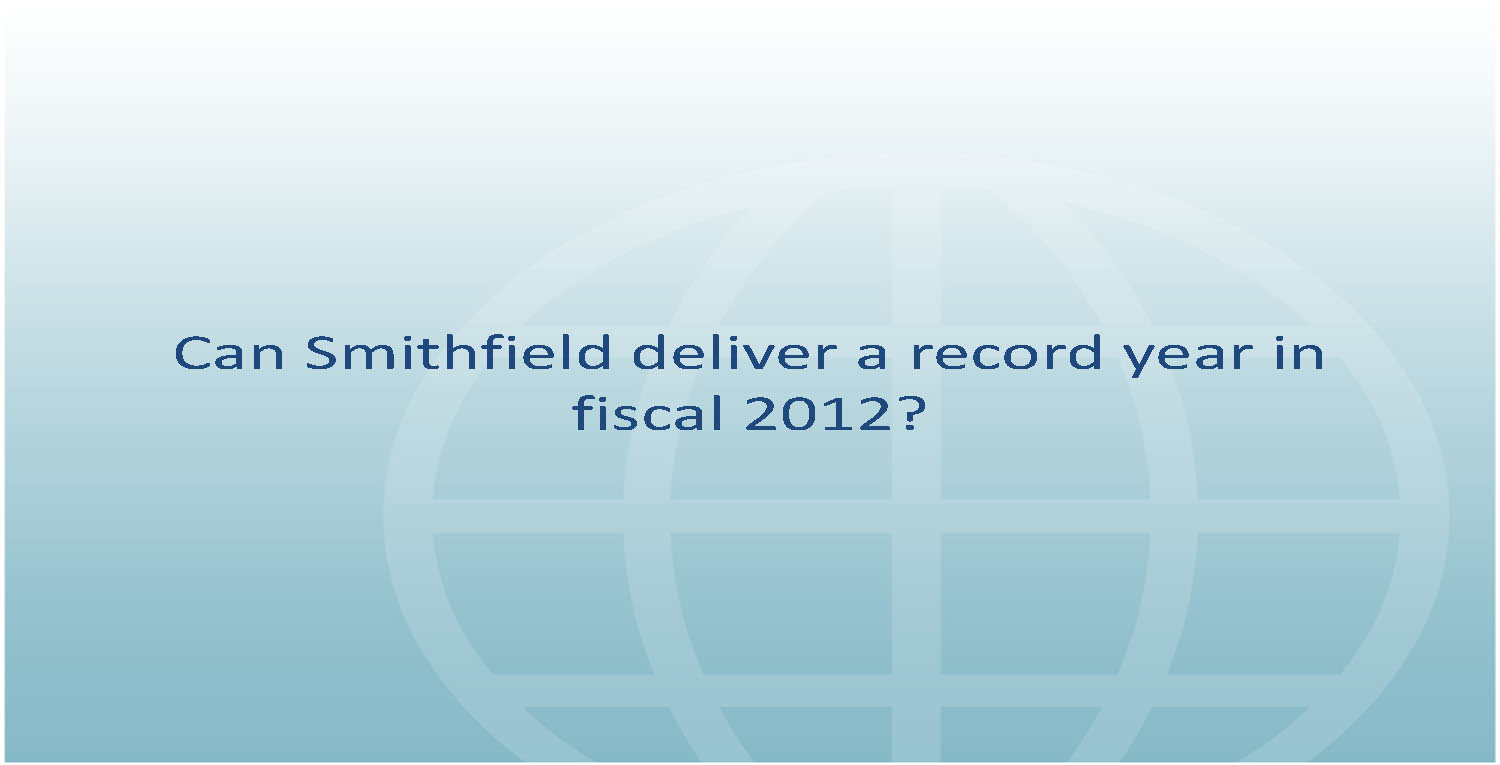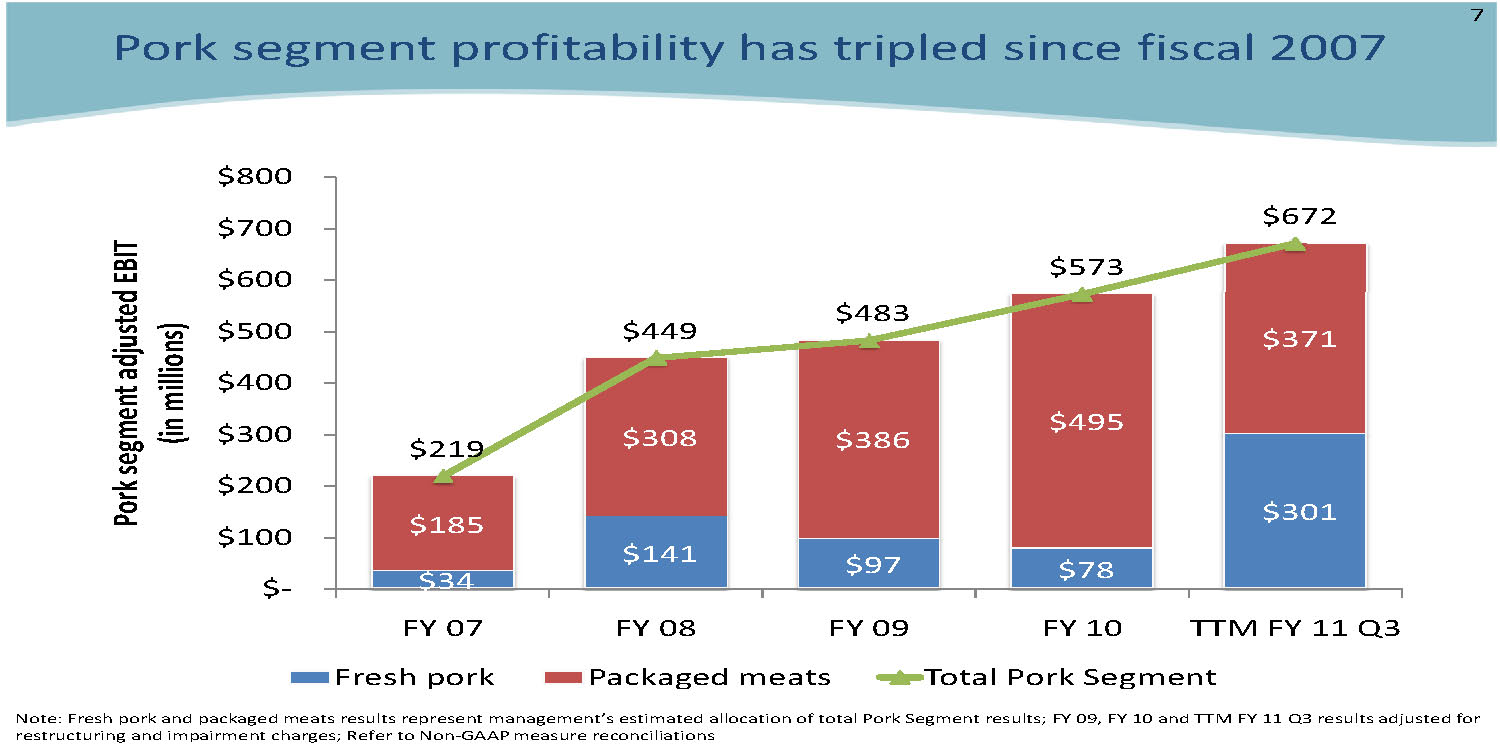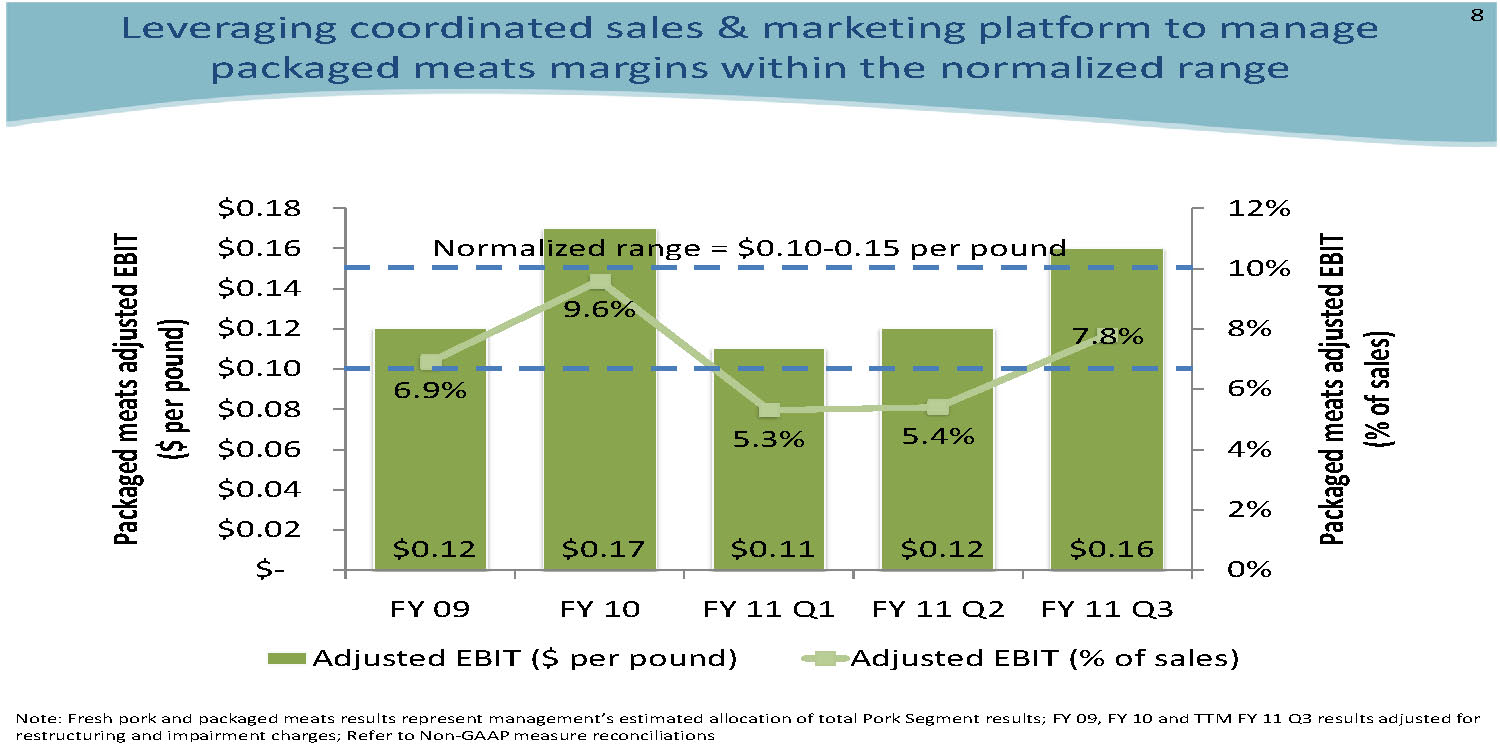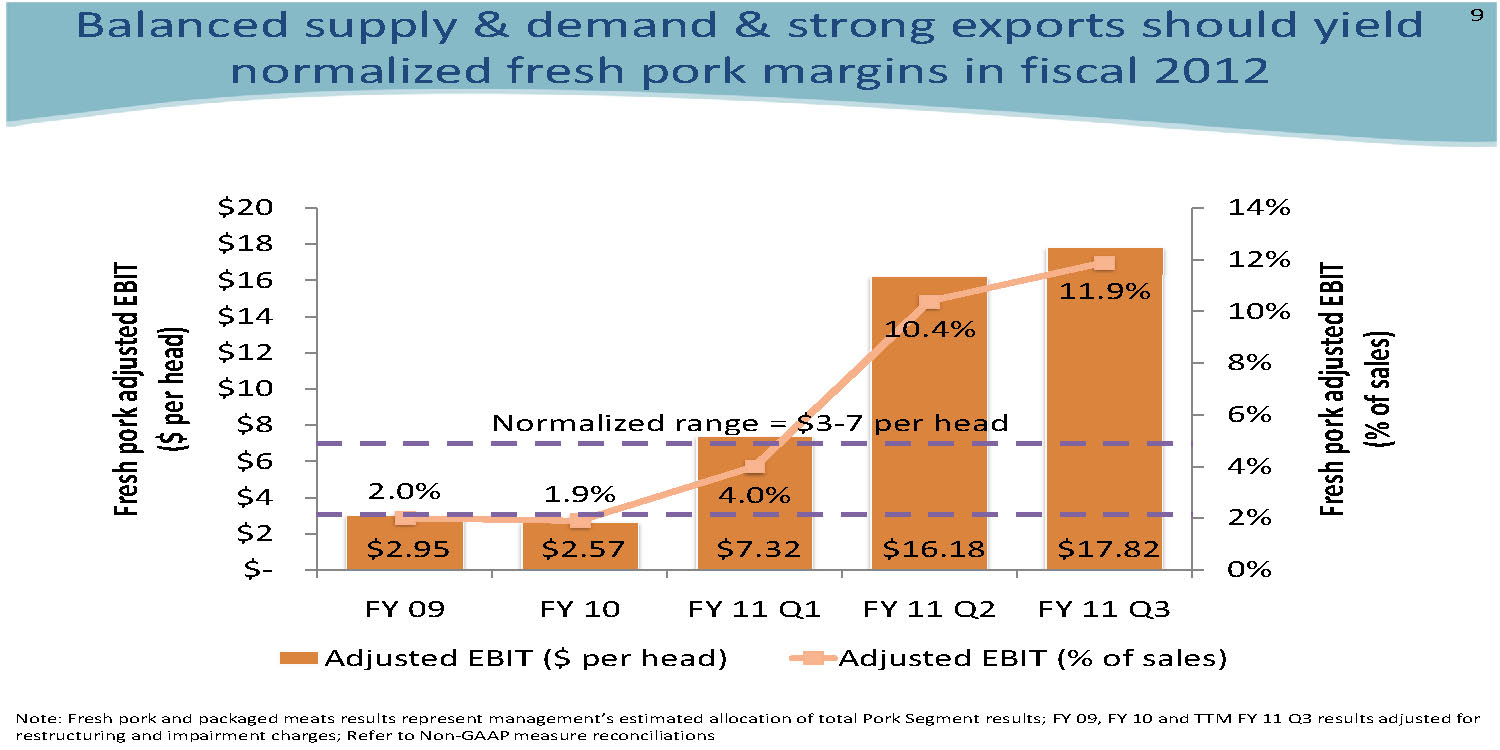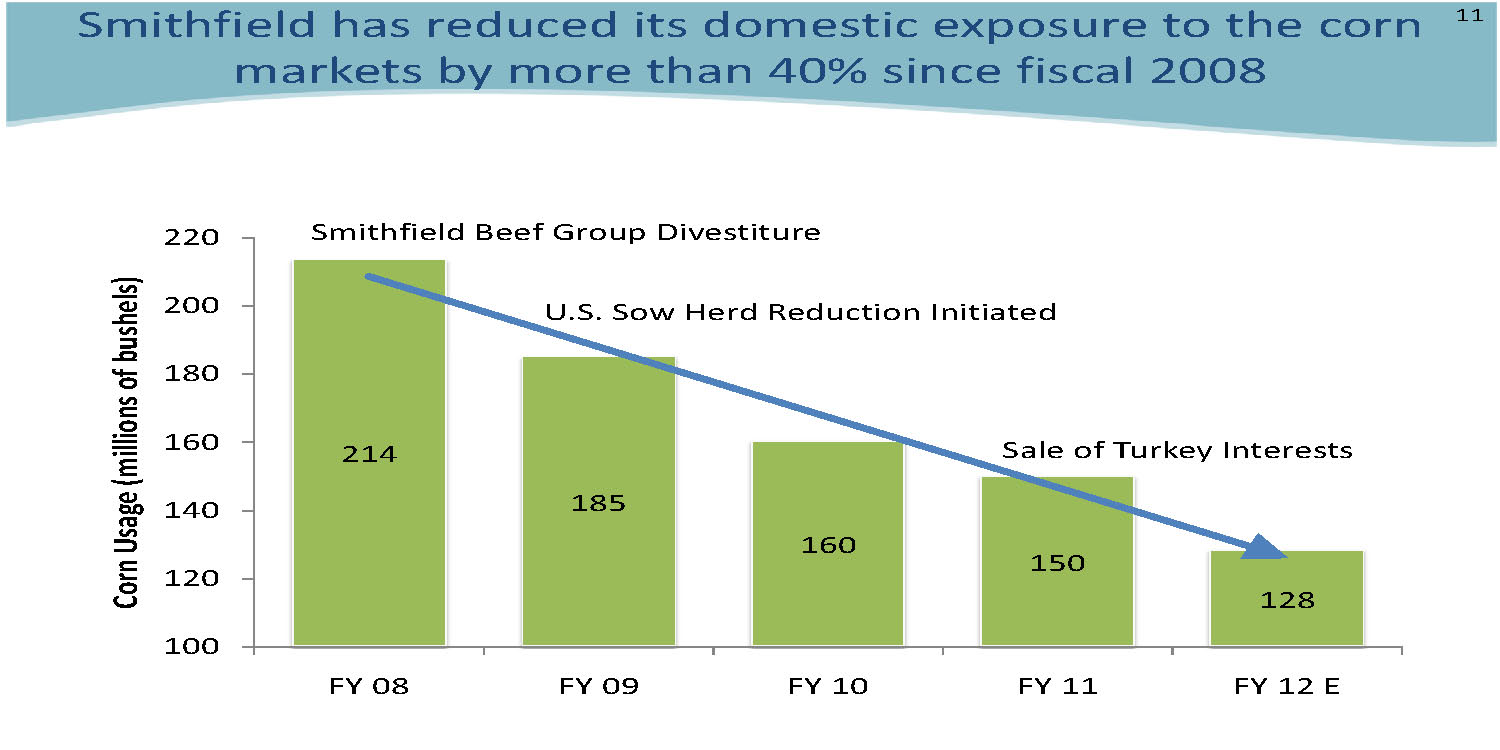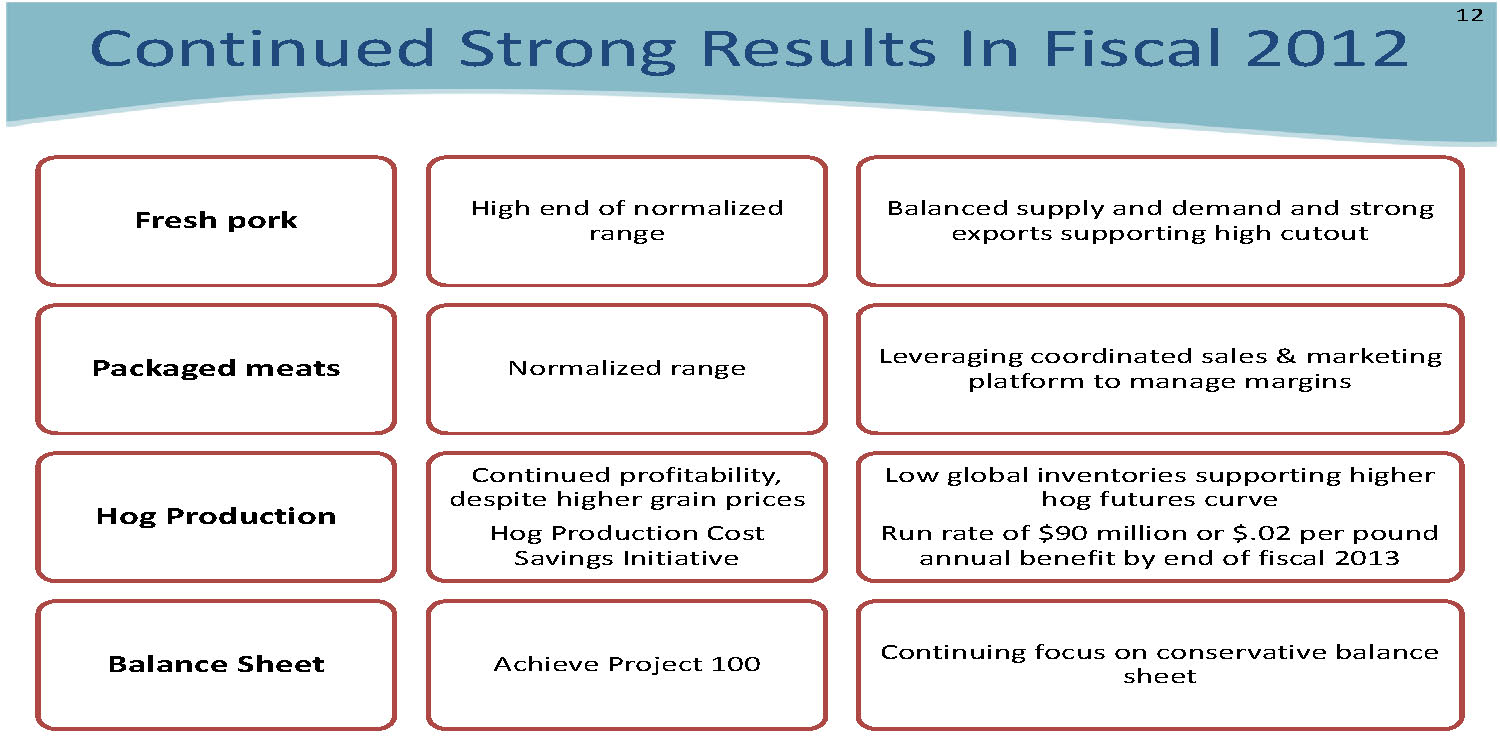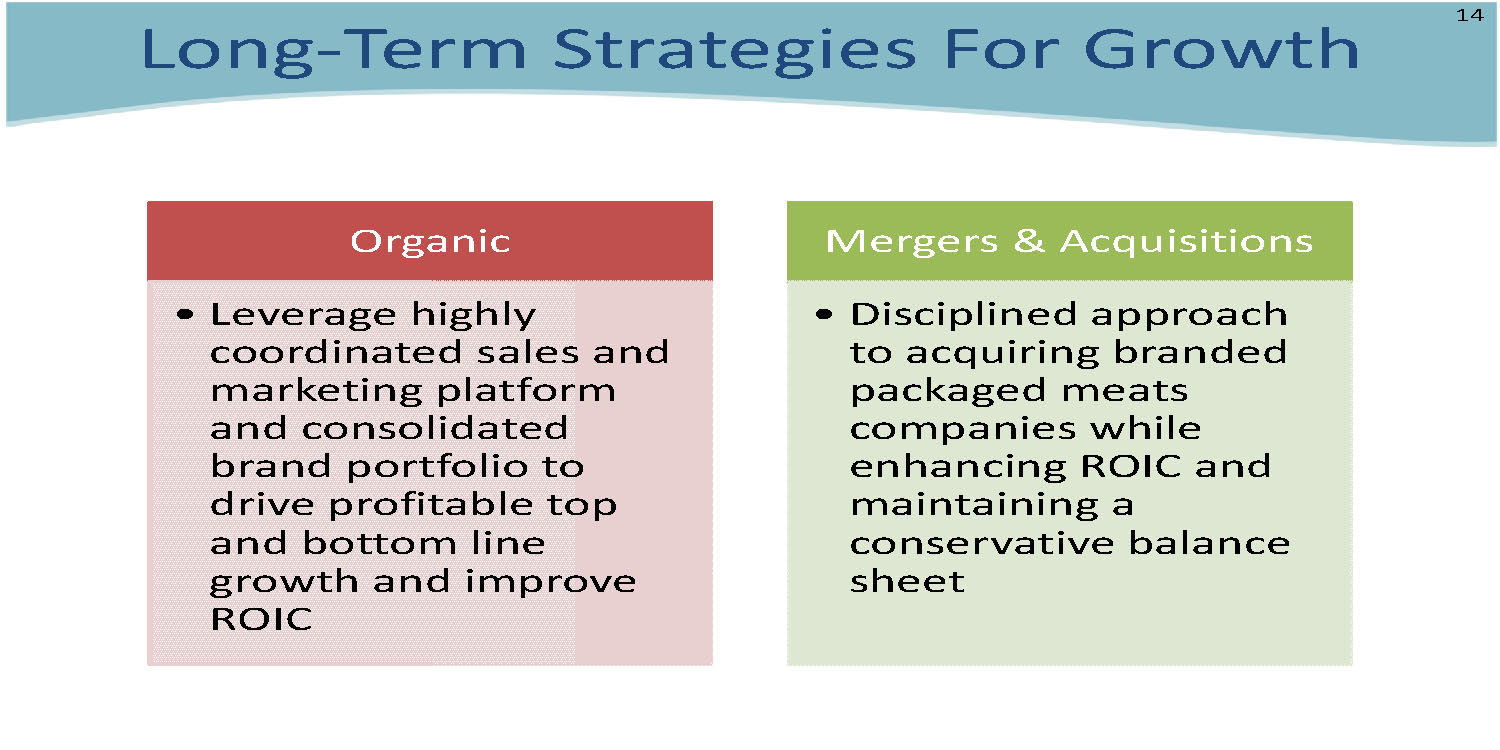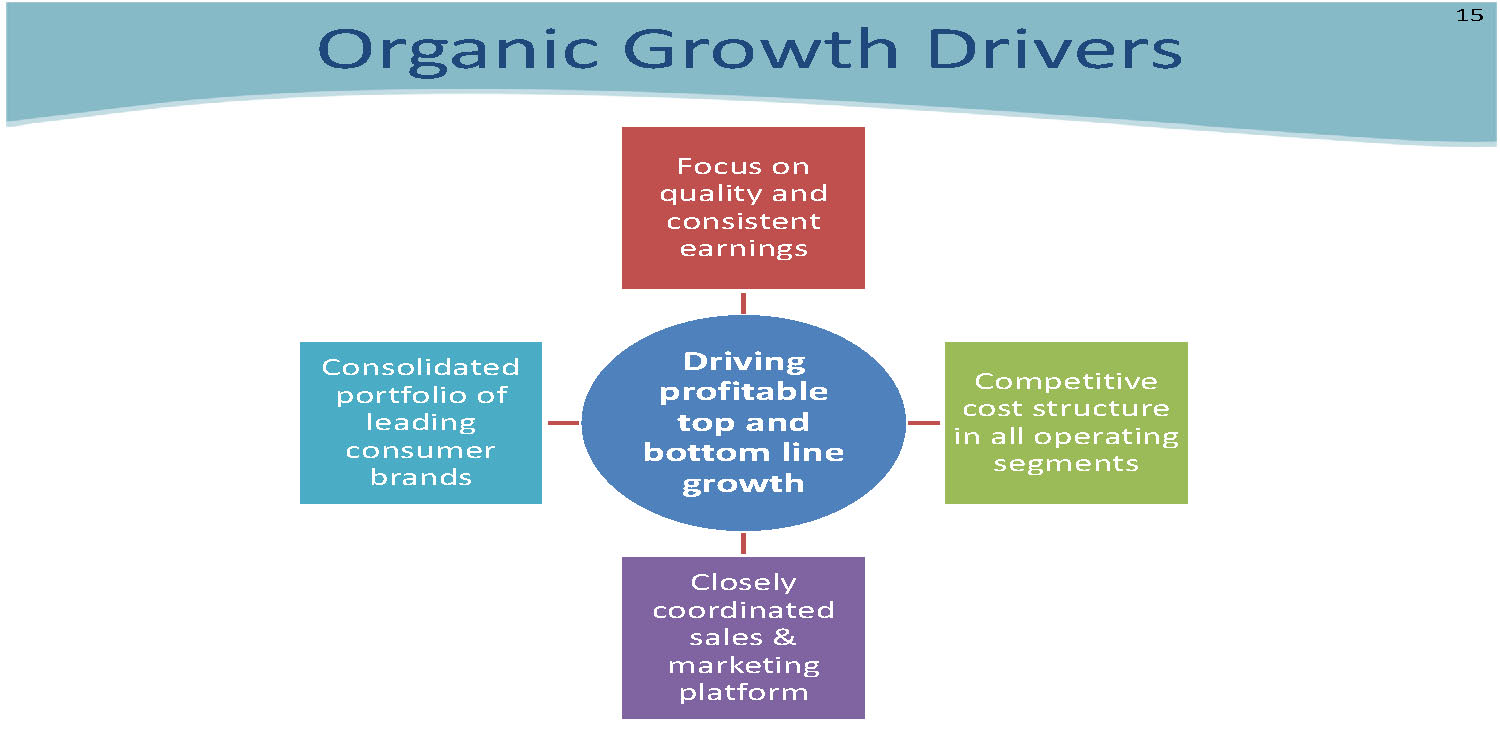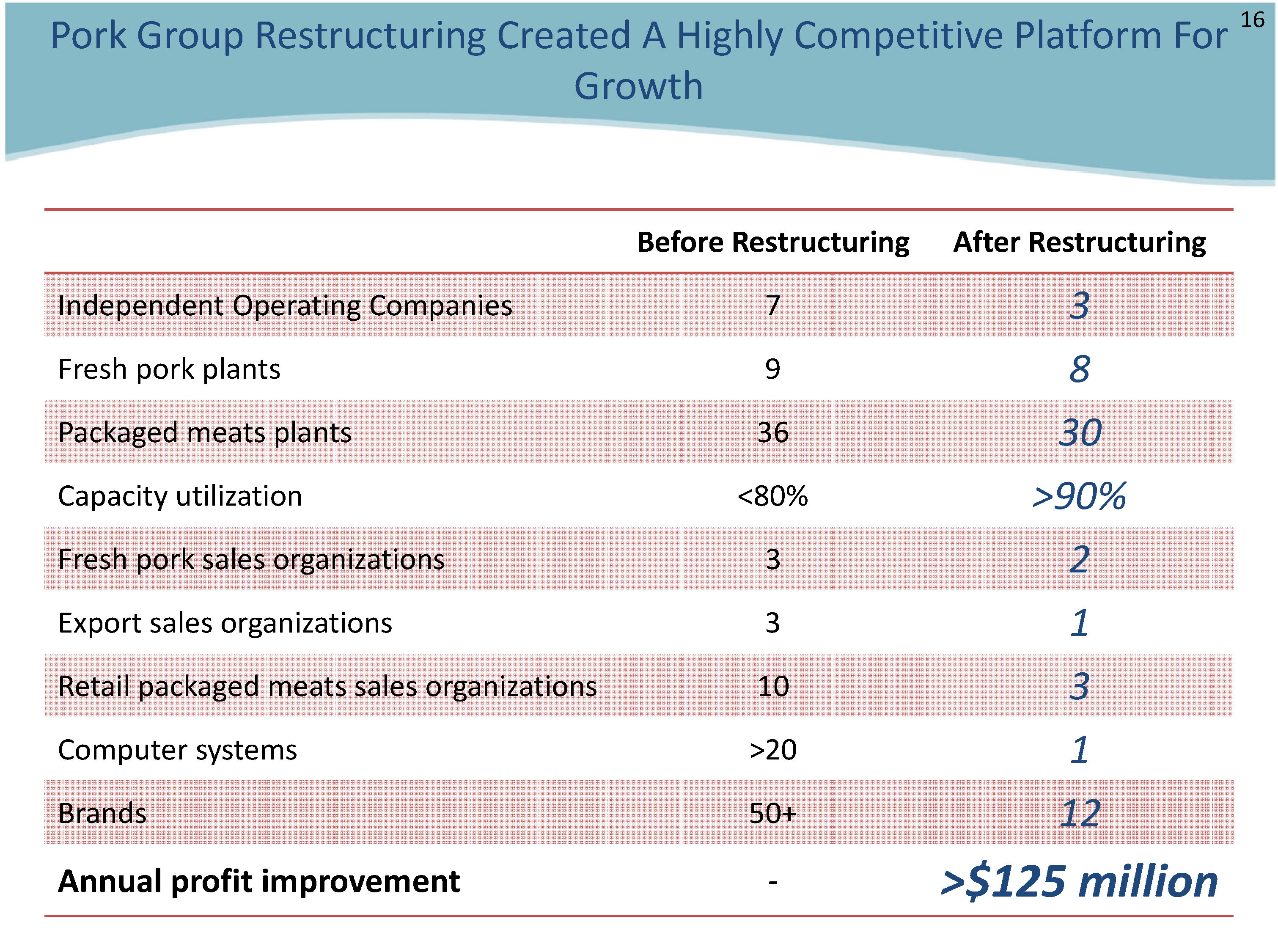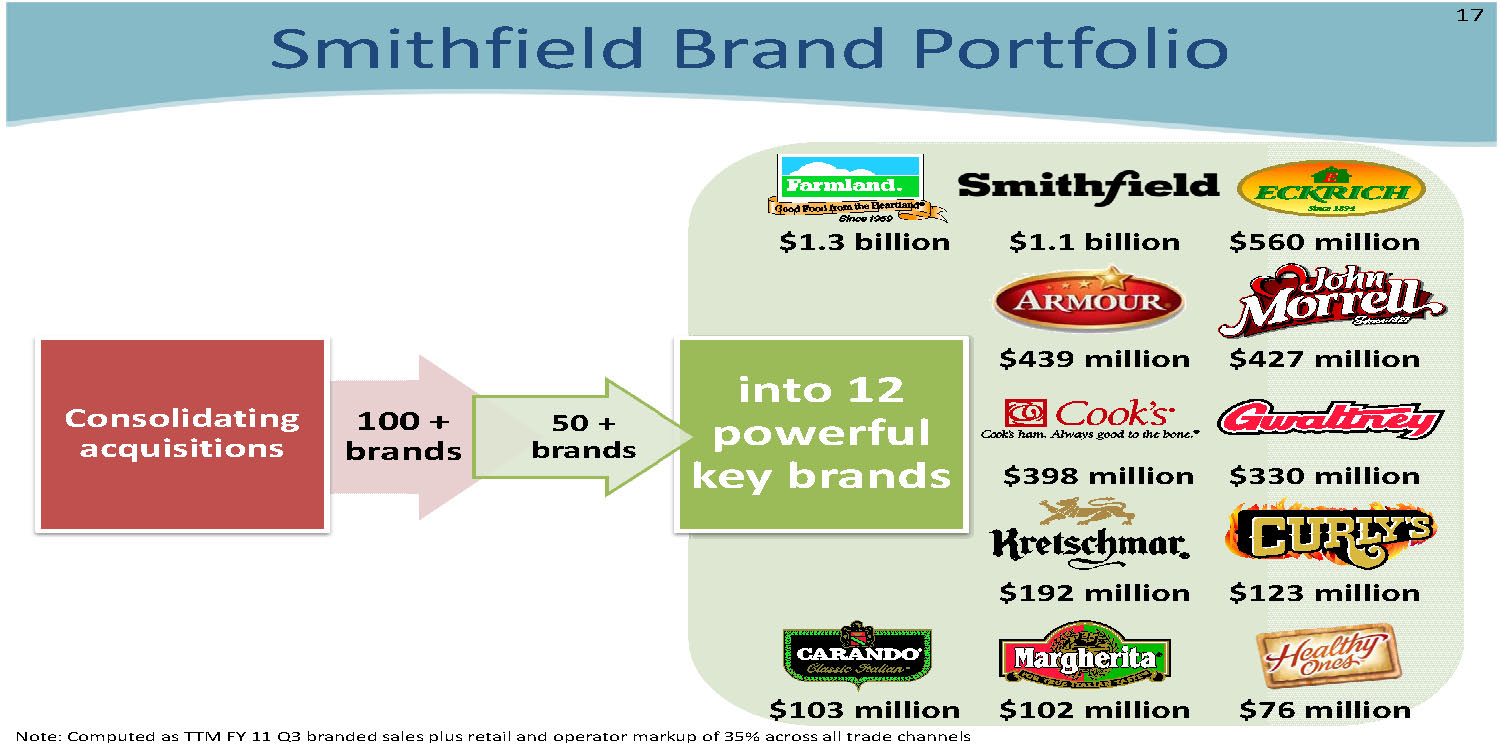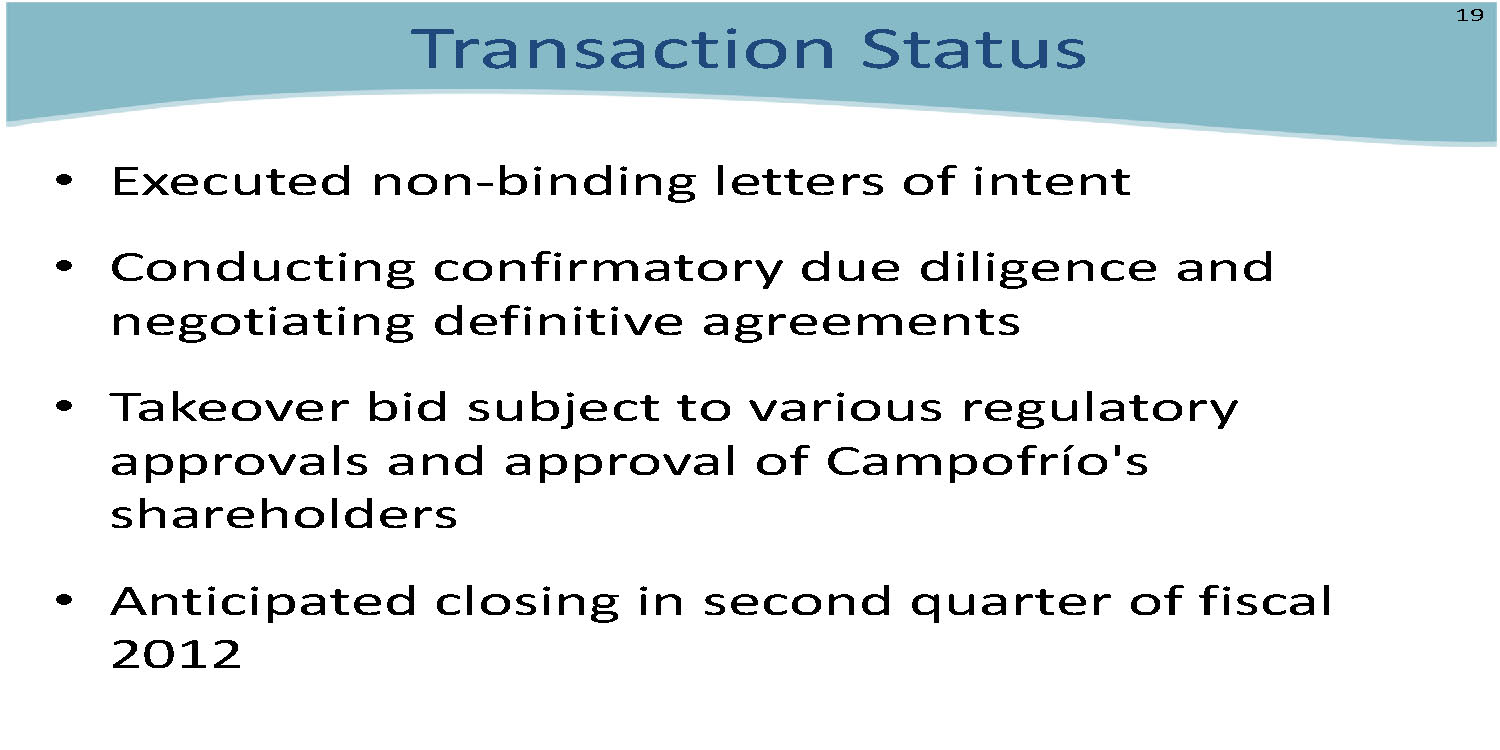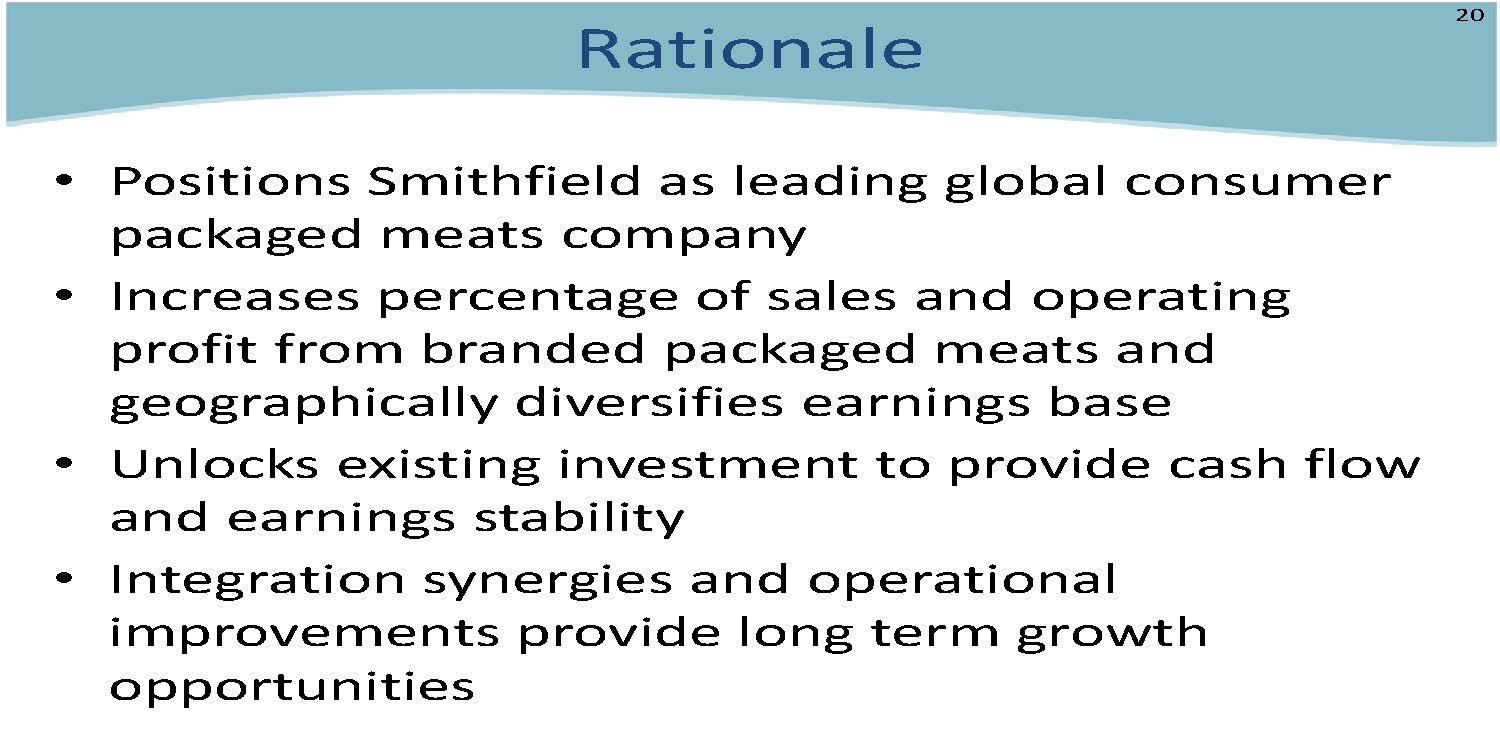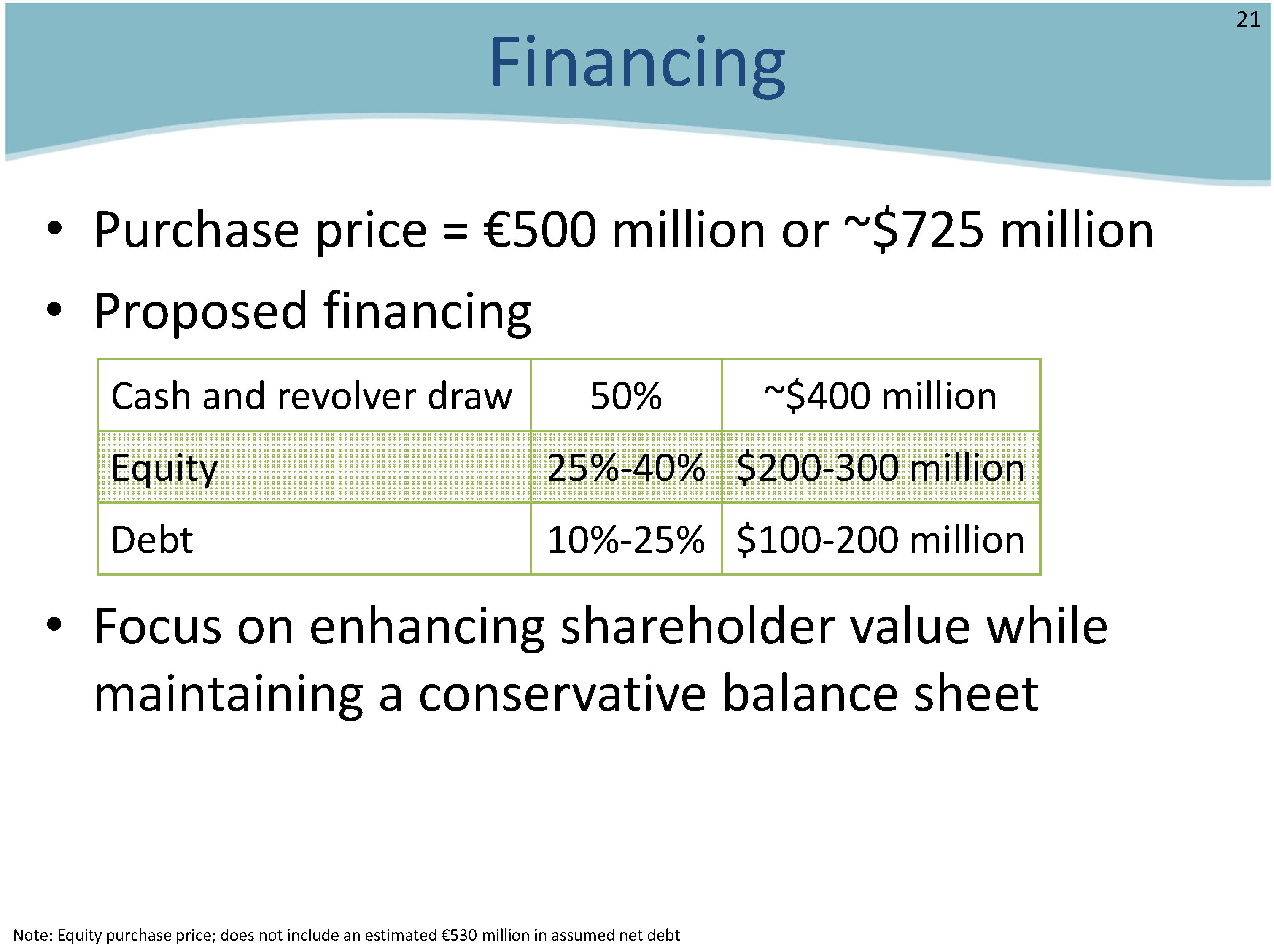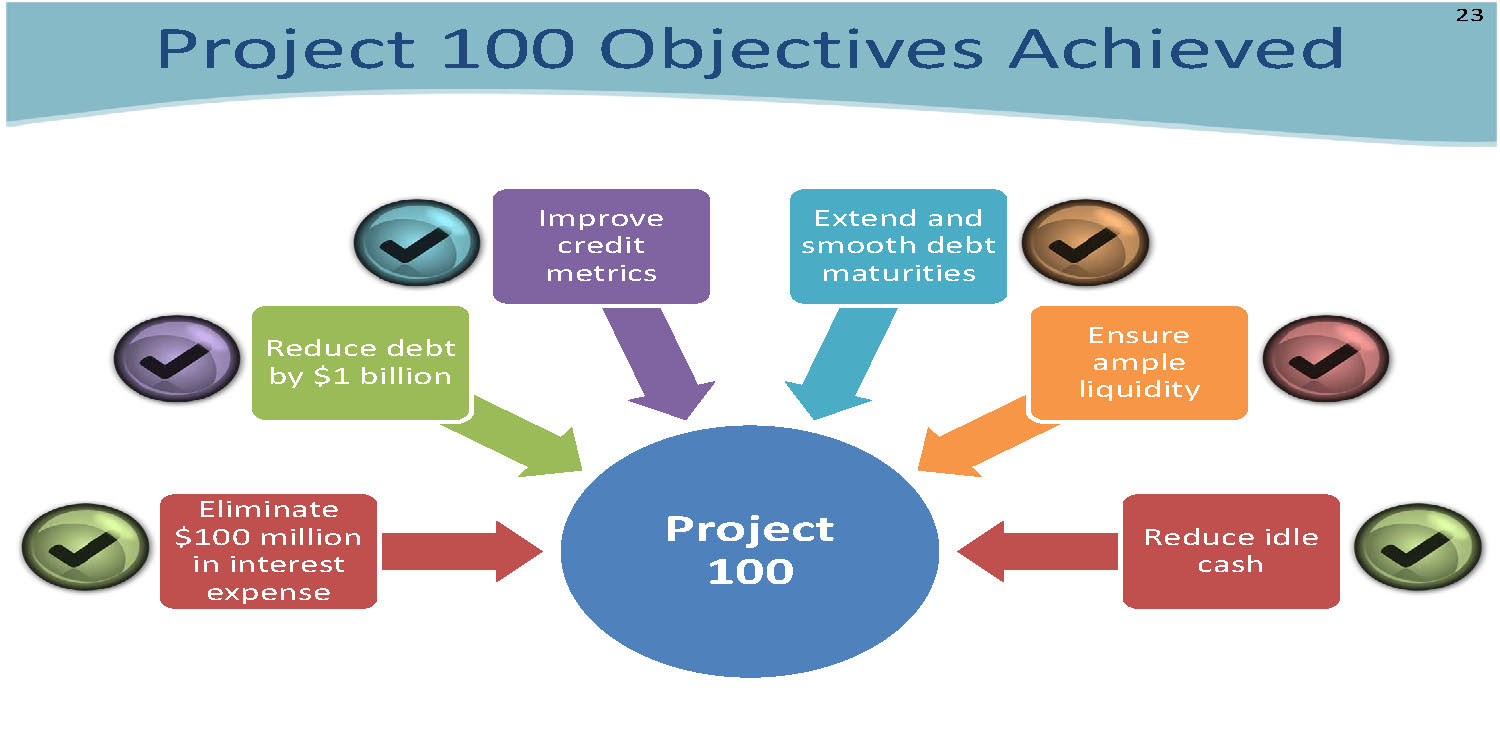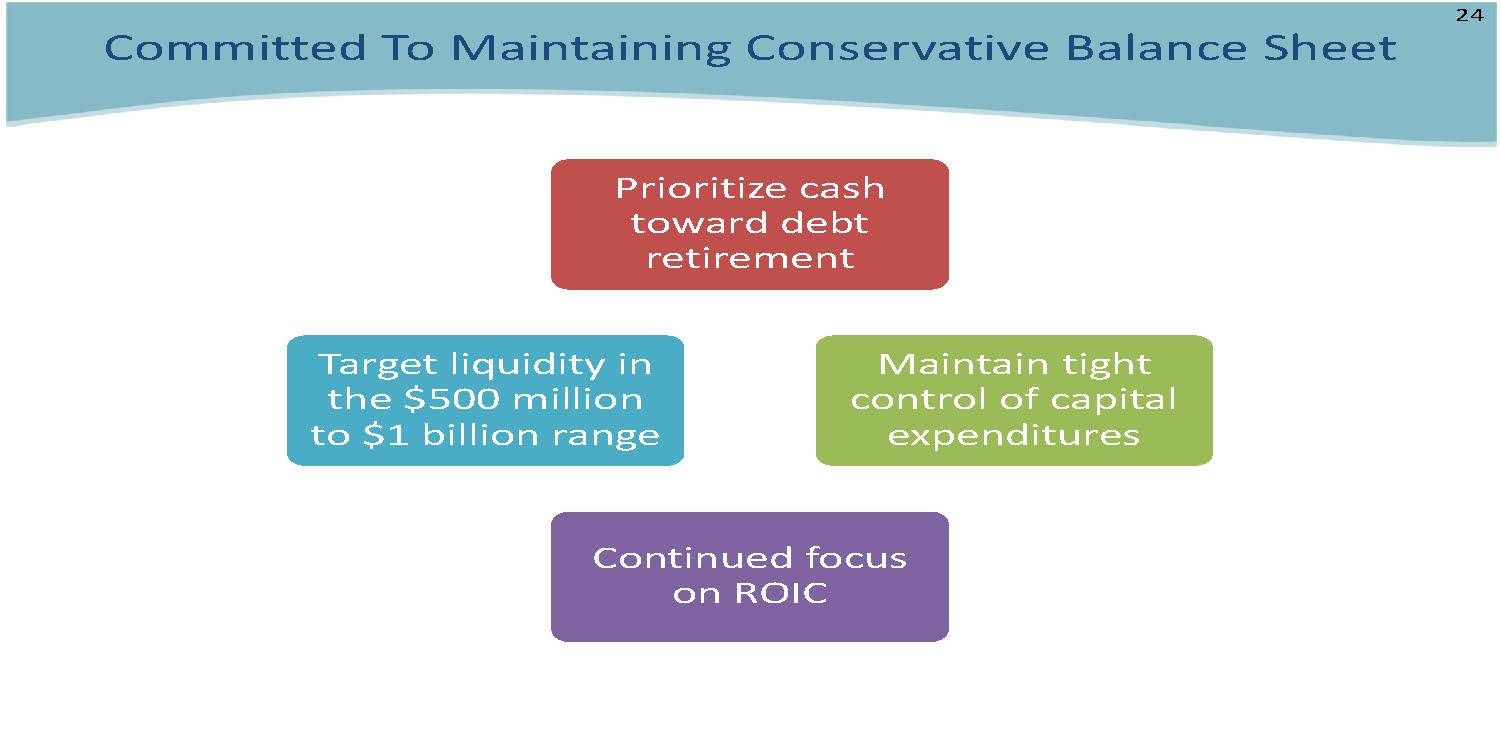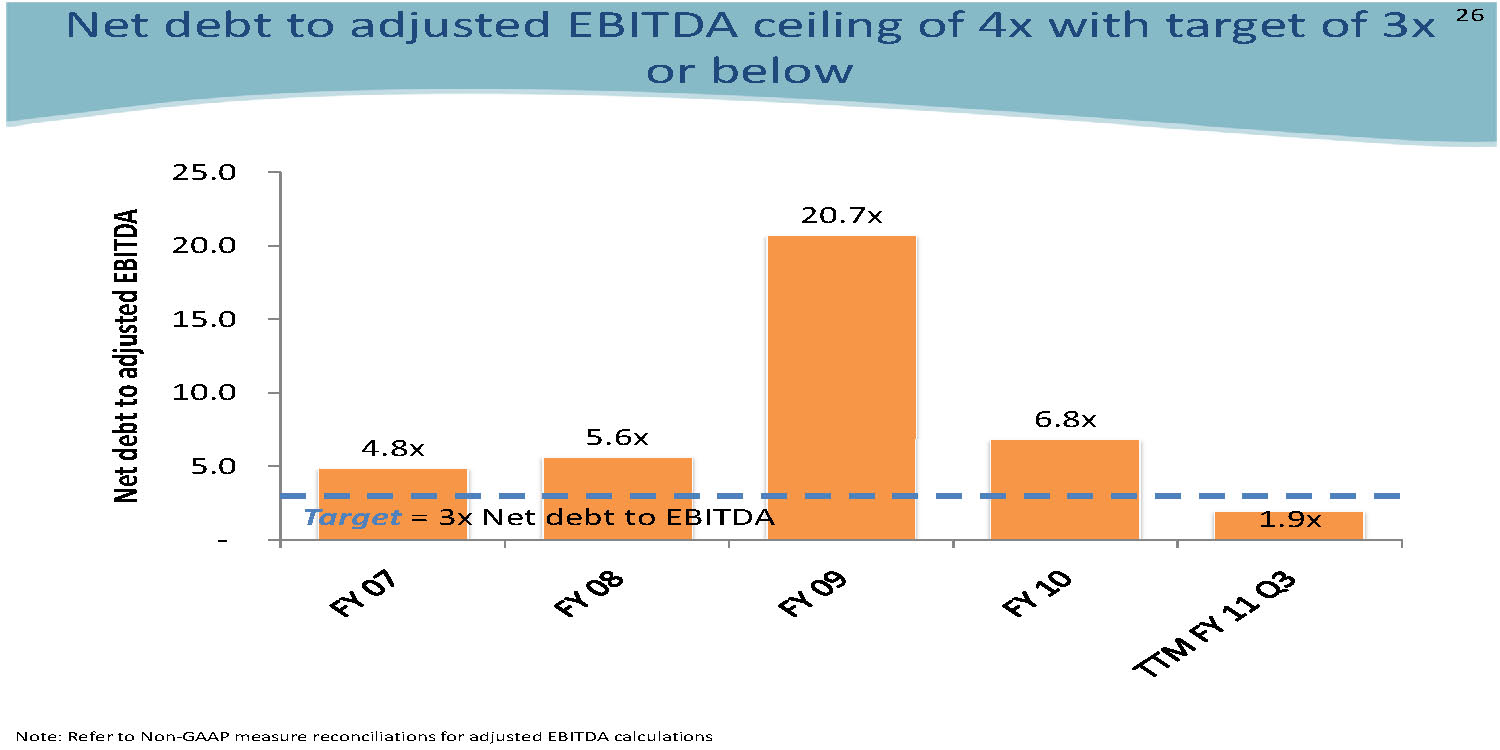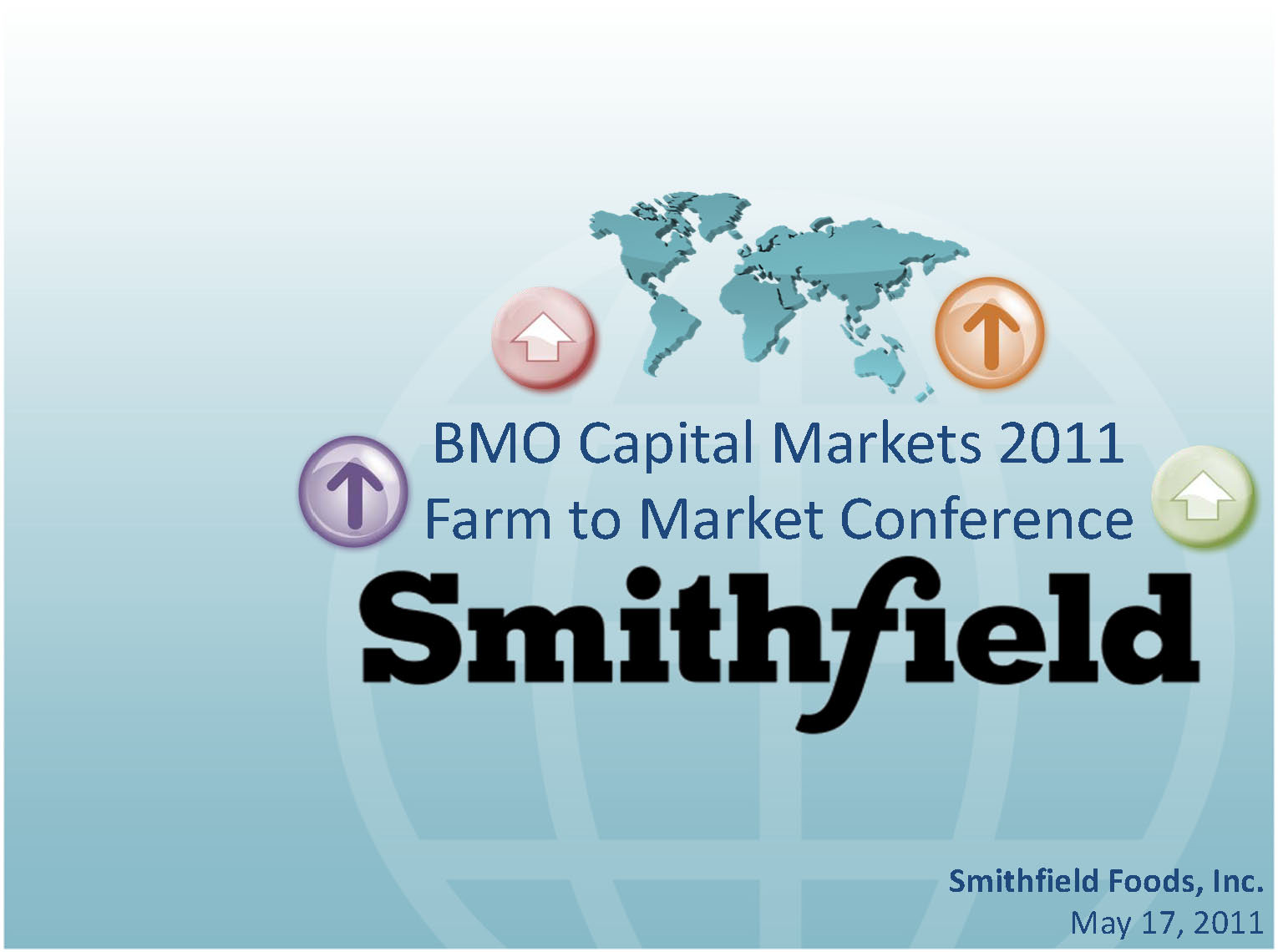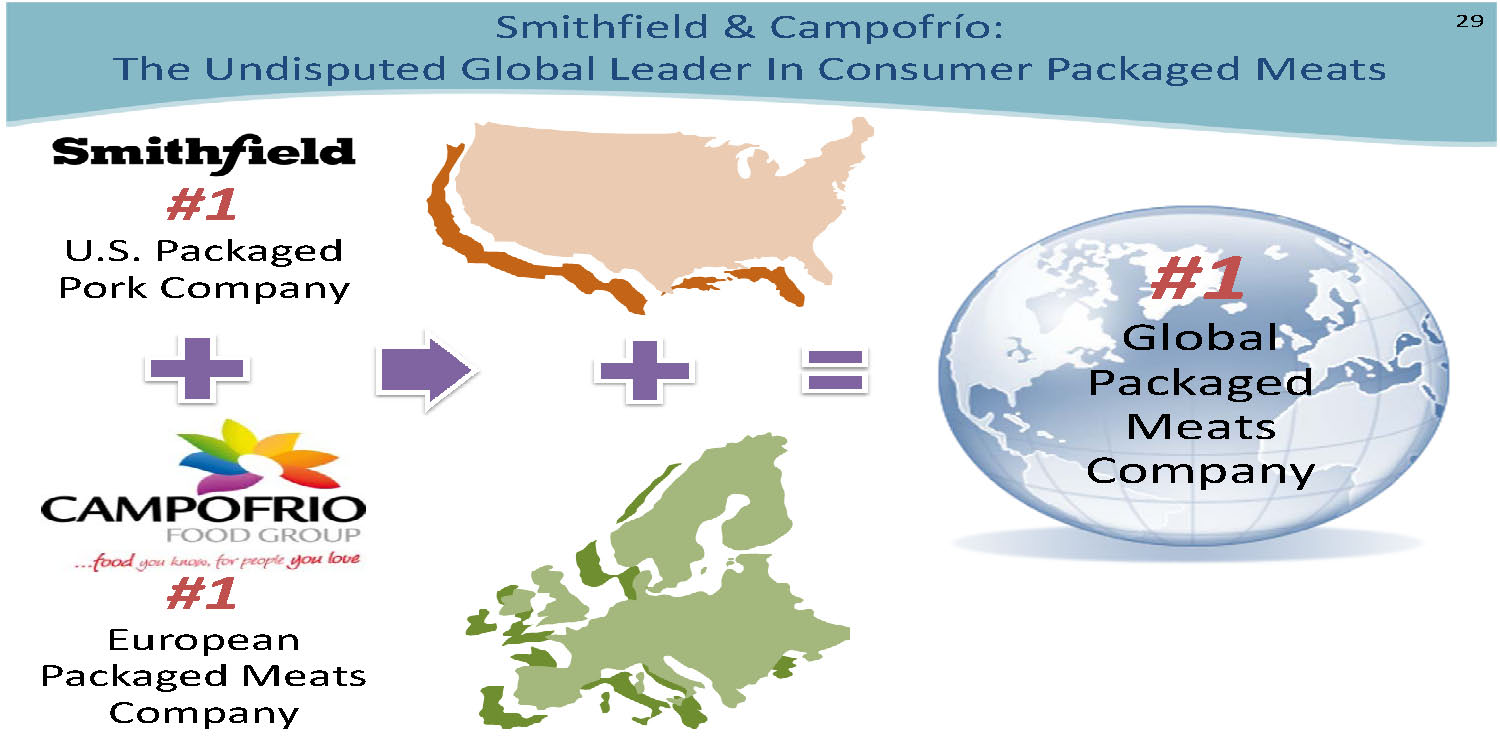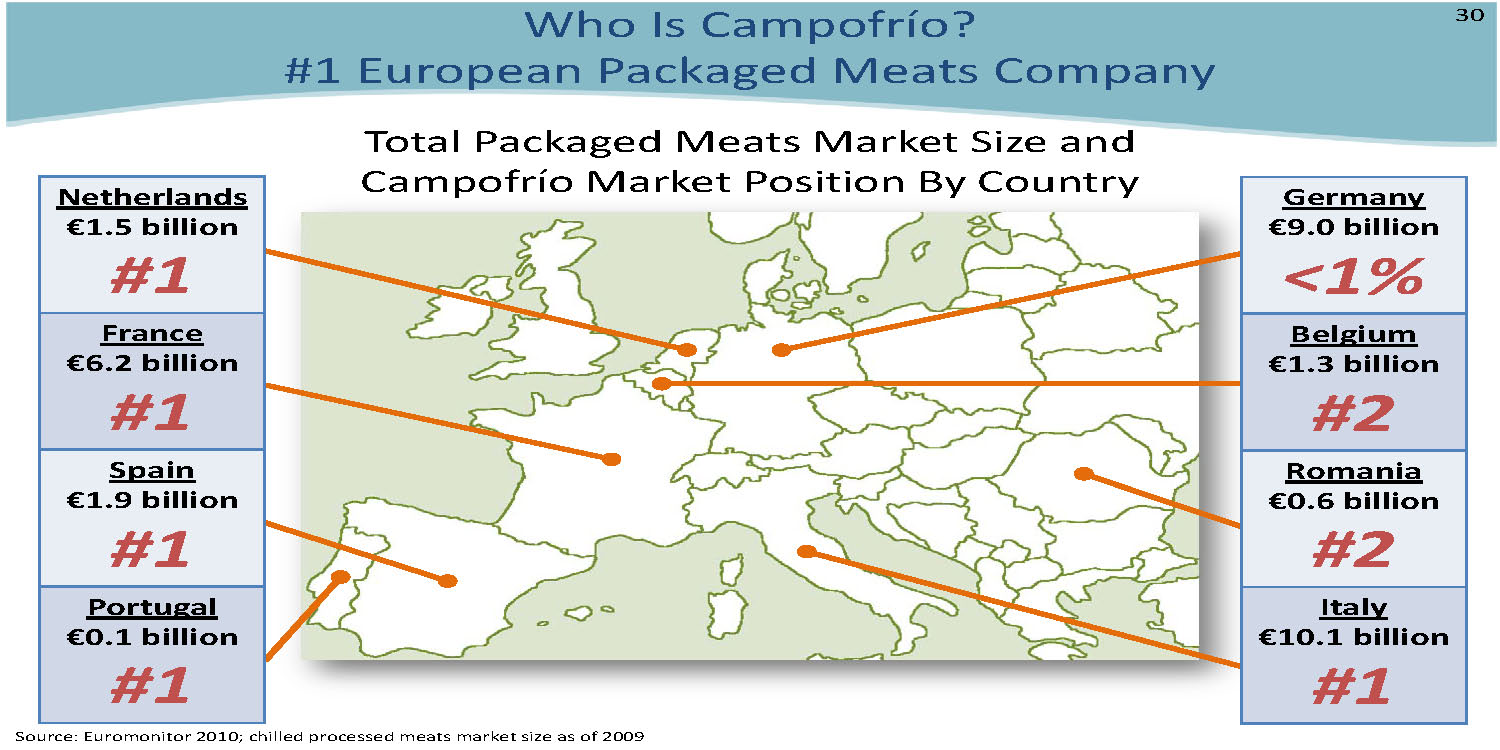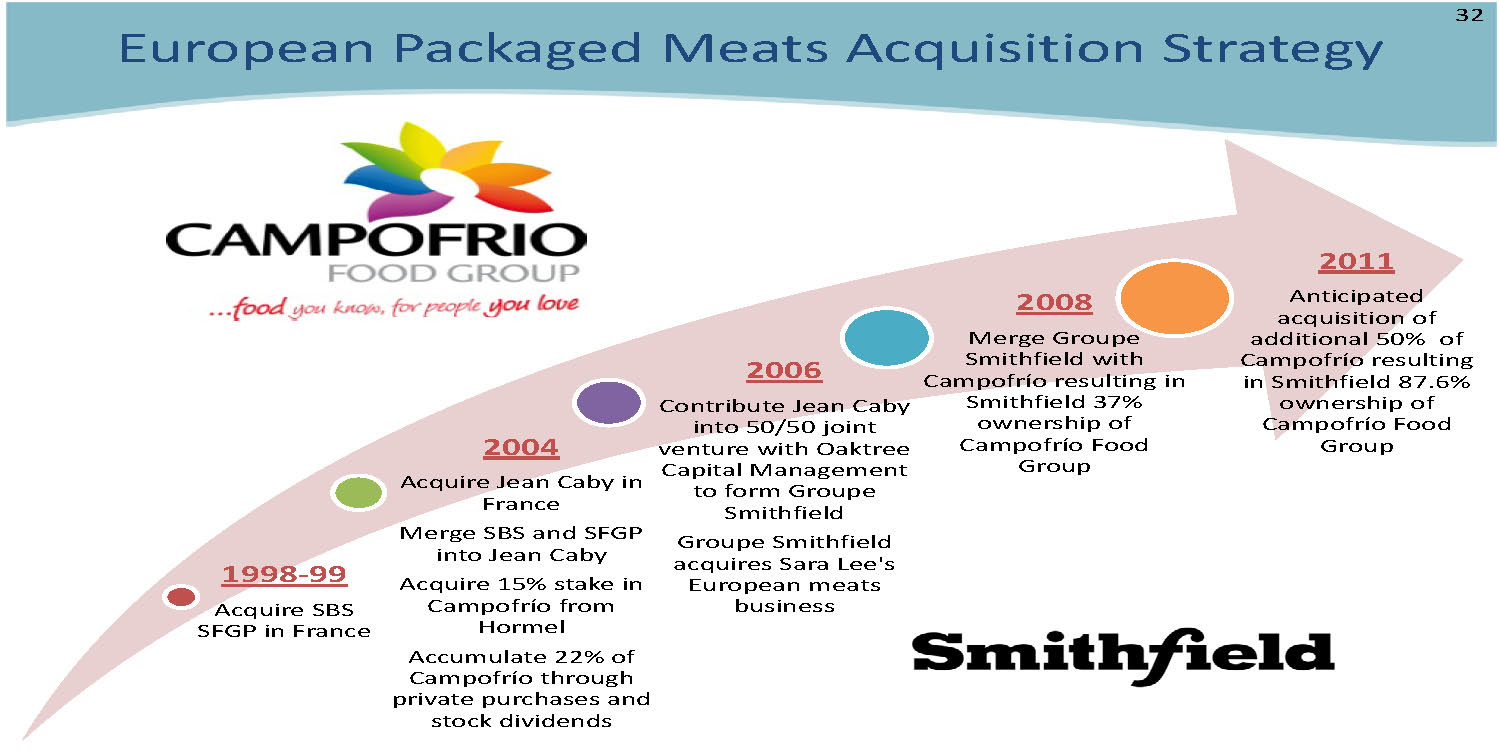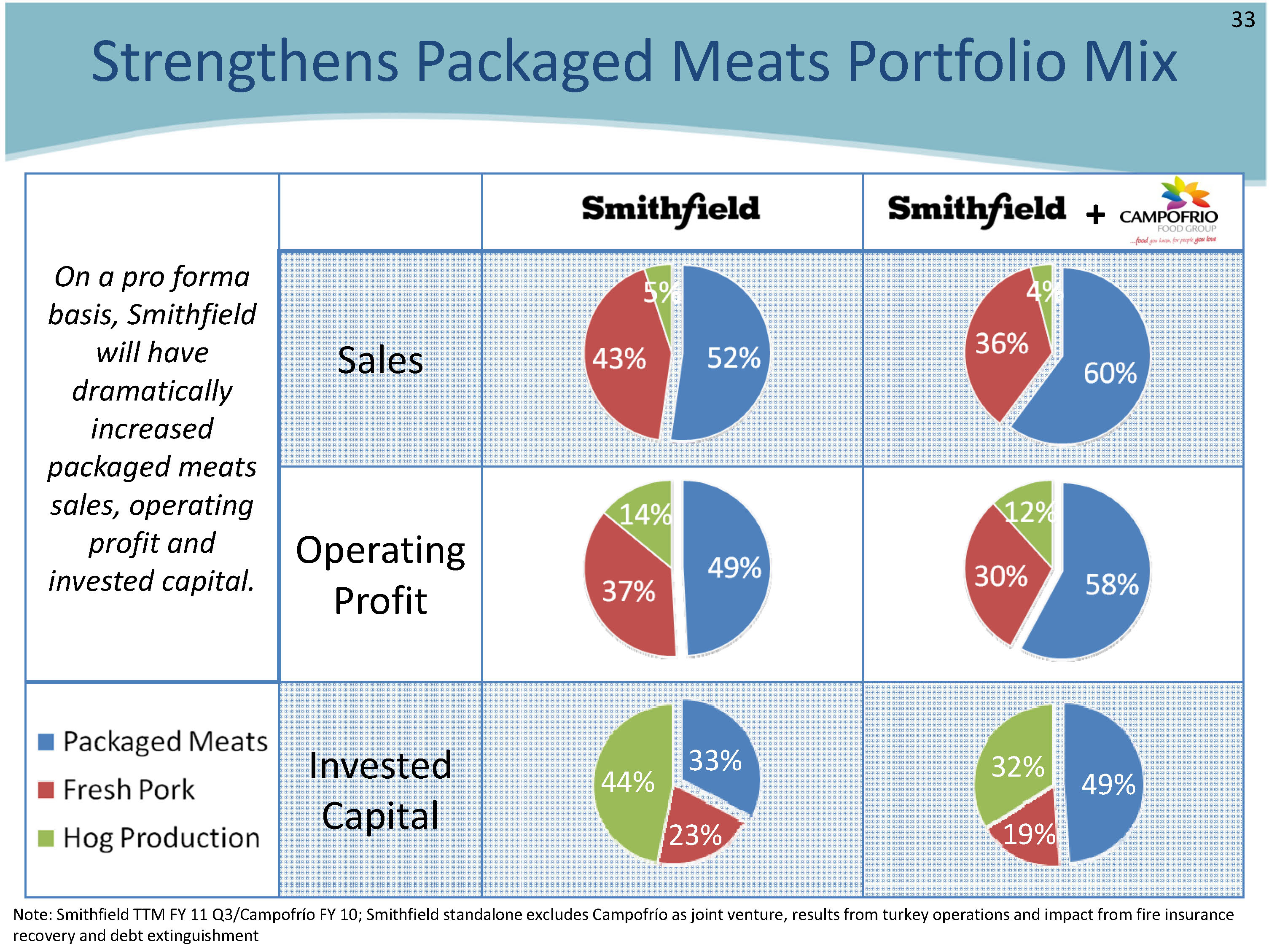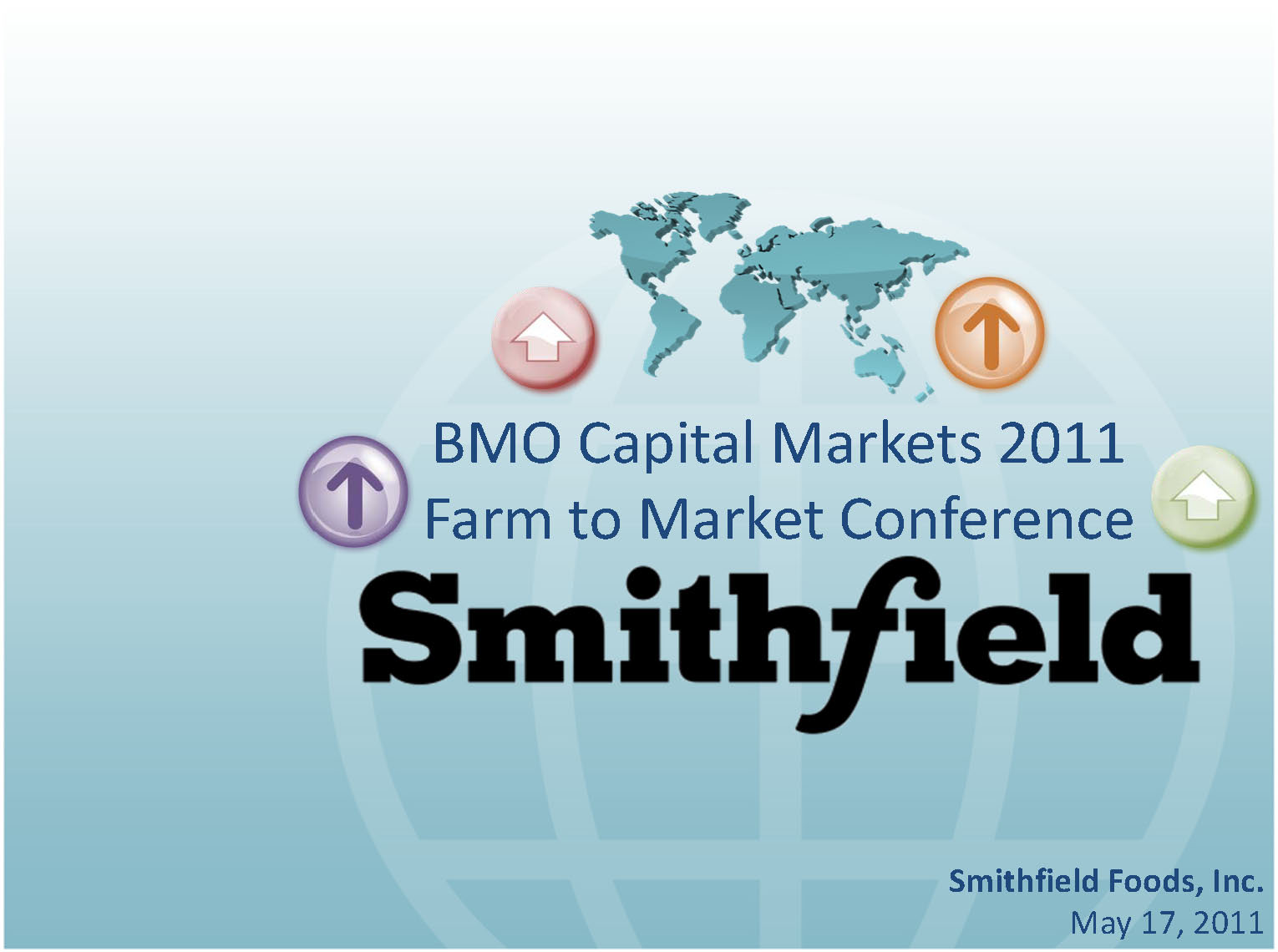Addressing Investors’
Frequently Asked Questions
C. Larry Pope
President and Chief Executive Officer
Robert W. Manly
Executive Vice President and Chief Financial Officer
Forward-Looking Statements
This presentation contains “forward-looking” statements within the meaning of the federal securities laws. The
forward-looking statements include statements concerning the Company’s outlook for the future, as well as other
statements of beliefs, future plans and strategies or anticipated events, and similar expressions concerning
matters that are not historical facts. The Company’s forward-looking information and statements are subject to
risks and uncertainties that could cause actual results to differ materially from those expressed in, or implied by,
the statements. These risks and uncertainties include the availability and prices of live hogs, raw materials, fuel
and supplies, food safety, livestock disease, live hog production costs, product pricing, the competitive
environment and related market conditions, risks associated with our indebtedness, including cost increases due
to rising interest rates or changes in debt ratings or outlook, hedging risk, operating efficiencies, changes in
foreign currency exchange rates, access to capital, the cost of compliance with changes to regulations and laws,
including changes in accounting standards, tax laws, environmental laws, agricultural laws and occupational,
health and safety laws, adverse results from on-going litigation, actions of domestic and foreign governments,
labor relations issues, credit exposure to large customers, the ability to make effective acquisitions and
dispositions and successfully integrate newly acquired businesses into existing operations, the Company’s ability
to effectively restructure portions of its operations and achieve cost savings from such restructurings and other
risks and uncertainties described in the Company’s Annual Report on Form 10-K for fiscal 2010 and in its
subsequent Quarterly Reports on Form 10-Q. Readers are cautioned not to place undue reliance on forward-
looking statements because actual results may differ materially from those expressed in, or implied by, the
statements. Any forward-looking statement that the Company makes speaks only as of the date of such
statement, and the Company undertakes no obligation to update any forward-looking statements, whether as a
result of new information, future events or otherwise. Comparisons of results for current and any prior periods
are not intended to express any future trends or indications of future performance, unless expressed as such, and
should only be viewed as historical data.
Non-GAAP Measure Reconciliations
Non-GAAP Measure Reconciliations
Frequently Asked Questions
1.Can Smithfield deliver a record year in fiscal
2012?
2.What are Smithfield’s core strategies for
growth?
3.How will the Campofrío acquisition benefit
Smithfield shareholders?
4.Is Smithfield committed to maintaining a
conservative balance sheet?
Can Smithfield deliver a record year in
fiscal 2012?
Pork segment profitability has tripled since fiscal 2007
Note: Fresh pork and packaged meats results represent management’s estimated allocation of total Pork Segment results; FY 09, FY 10and TTM FY 11 Q3 results adjusted for restructuring and impairment charges; Refer to Non-GAAP measure reconciliations
Leveraging coordinated sales & marketing platform to manage packaged meats margins within the normalized range
Normalized range = $0.10-0.15 per pound
Note: Fresh pork and packaged meats results represent management’s estimated allocation of total Pork Segment results; FY 09, FY 10and TTM FY 11 Q3 results adjusted for restructuring and impairment charges; Refer to Non-GAAP measure reconciliations
Balanced supply & demand & strong exports should yield normalized fresh pork margins in fiscal 2012
Normalized range = $3-7 per head
Note: Fresh pork and packaged meats results represent management’s estimated allocation of total Pork Segment results; FY 09, FY 10and TTM FY 11 Q3 results adjusted for restructuring and impairment charges; Refer to Non-GAAP measure reconciliations
Low global protein inventories are supporting a higher hog futures curve & yielding continued hog production profitability, despite higher grain prices
Note: Industry profitability based on futures curves for live hogs and grains on 05/12/11; cost is pre-interest
Smithfield has reduced its domestic exposure to the corn markets by more than 40% since fiscal 2008
Smithfield Beef Group Divestiture
Sale of Turkey Interests
U.S. Sow Herd Reduction Initiated
Continued Strong Results In Fiscal 2012
Fresh porkPackaged meatsHog ProductionBalance SheetHigh end of normalized
rangeNormalized rangeContinued profitability,
despite higher grain pricesHog Production Cost
Savings InitiativeAchieve Project 100Balanced supply and demand and strong
exports supporting high cutoutLeveraging coordinated sales & marketing
platform to manage marginsLow global inventories supporting higher
hog futures curveRun rate of $90 million or $.02 per pound
annual benefit by end of fiscal 2013Continuing focus on conservative balance
sheet
What are Smithfield’s
core strategies for growth?
Long-Term Strategies For Growth
Organic•Leverage highly
coordinated sales and
marketing platform
and consolidated
brand portfolio to
drive profitable top
and bottom line
growth and improve
ROICMergers & Acquisitions•Disciplined approach
to acquiring branded
packaged meats
companies while
enhancing ROIC and
maintaining a
conservative balance
sheet
Organic Growth Drivers
Driving
profitable
top and
bottom line
growthFocus on
quality and
consistent
earningsCompetitive
cost structure
in all operating
segmentsClosely
coordinated
sales &
marketing
platformConsolidated
portfolio of
leading
consumer
brands
Pork Group Restructuring Created A Highly Competitive Platform For Growth
16
Before Restructuring
After Restructuring
IndependentOperating Companies
7
3
Freshpork plants
9
8
Packagedmeats plants
36
30
Capacityutilization
<80%
>90%
Fresh pork sales organizations
3
2
Exportsales organizations
3
1
Retail packagedmeats sales organizations
10
3
Computer systems
>20
1
Brands
50+
12
Annual profit improvement
-
>$125 million
Smithfield Brand Portfolio
100 +
brandsConsolidating
acquisitionsinto 12
powerful
key brands
50 +
brands
Note: Computed as TTM FY 11 Q3 branded sales plus retail and operator markup of 35% across all trade channels
How will the Campofrío acquisition
benefit Smithfield shareholders?
Transaction Status
•Executed non-binding letters of intent
•Conducting confirmatory due diligence and
negotiating definitive agreements
•Takeover bid subject to various regulatory
approvals and approval of Campofrío's
shareholders
•Anticipated closing in second quarter of fiscal
2012
Rationale
•Positions Smithfield as leading global consumer
packaged meats company
•Increases percentage of sales and operating
profit from branded packaged meats and
geographically diversifies earnings base
•Unlocks existing investment to provide cash flow
and earnings stability
•Integration synergies and operational
improvements provide long term growth
opportunities
Financing
•Purchase price = €500 million or ~$725 million
•Proposed financing
•Focus on enhancing shareholder value while
maintaining a conservative balance sheet
Cash andrevolver draw
50%
~$400 million
Equity
25%-40%
$200-300 million
Debt
10%-25%
$100-200 million
Note: Equity purchase price; does not include an estimated €530 million in assumed net debt
Is Smithfield committed to maintaining a
conservative balance sheet?
Project 100 Objectives Achieved
Project
100Eliminate
$100 million
in interest
expenseReduce debt
by $1 billionImprove
credit
metricsExtend and
smooth debt
maturitiesEnsure
ample
liquidityReduce idle
cash
Committed To Maintaining Conservative Balance Sheet
Prioritize cash
toward debt
retirement
Maintain tight
control of capital
expendituresContinued focus
on ROICTarget liquidity in
the $500 million
to $1 billion range
Net debt to total capitalization ceiling of 50% with target of 40% or below
Note: Net debt is equal to notes payable and long-term debt and capital lease obligations, including current portion, less cash and cash equivalents; computed using net debt divided by the sum of net debt and shareholders’ equity.
Ceiling= 50% Net debt to total capitalization
Target= 40% Net debt to total capitalization
Net debt to adjusted EBITDA ceiling of 4x with target of 3x or below
Target= 3x Net debt to EBITDA
Note: Refer to Non-GAAP measure reconciliations for adjusted EBITDA calculations
Appendix –
More about Campofrío Food Group
Smithfield & Campofrío:
The Undisputed Global Leader In Consumer Packaged Meats
#1Global
Packaged
Meats
Company
#1U.S. Packaged
Pork Company#1European
Packaged Meats
Company
Who Is Campofrío?
#1 European Packaged Meats Company
Netherlands
€1.5 billion
#1
France
€6.2 billion
#1
Spain
€1.9 billion
#1
Portugal
€0.1 billion
#1
Germany
€9.0 billion
<1%
Belgium
€1.3 billion
#2
Romania
€0.6 billion
#2
Italy
€10.1 billion
#1
Source: Euromonitor2010; chilled processed meats market size as of 2009
Total Packaged Meats Market Size and
Campofrío Market PositionBy Country
Leading Branded Portfolio
European Packaged Meats Acquisition Strategy
1998-99Acquire SBS
SFGP in France2004Acquire Jean Caby in
FranceMerge SBS and SFGP
into Jean CabyAcquire 15% stake in
Campofrío from
HormelAccumulate 22% of
Campofrío through
private purchases and
stock dividends2006Contribute Jean Caby
into 50/50 joint
venture with Oaktree
Capital Management
to form Groupe
SmithfieldGroupe Smithfield
acquires Sara Lee's
European meats
business2008Merge Groupe
Smithfield with
Campofrío resulting in
Smithfield 37%
ownership of
Campofrío Food
Group2011Anticipated
acquisition of
additional 50% of
Campofrío resulting
in Smithfield 87.6%
ownership of
Campofrío Food
Group
Strengthens Packaged Meats Portfolio Mix
On a pro forma
basis, Smithfield
will have
dramatically
increasedpackaged meatssales, operating
profit and
invested capital.
Sales
Operating
Profit
InvestedCapital
